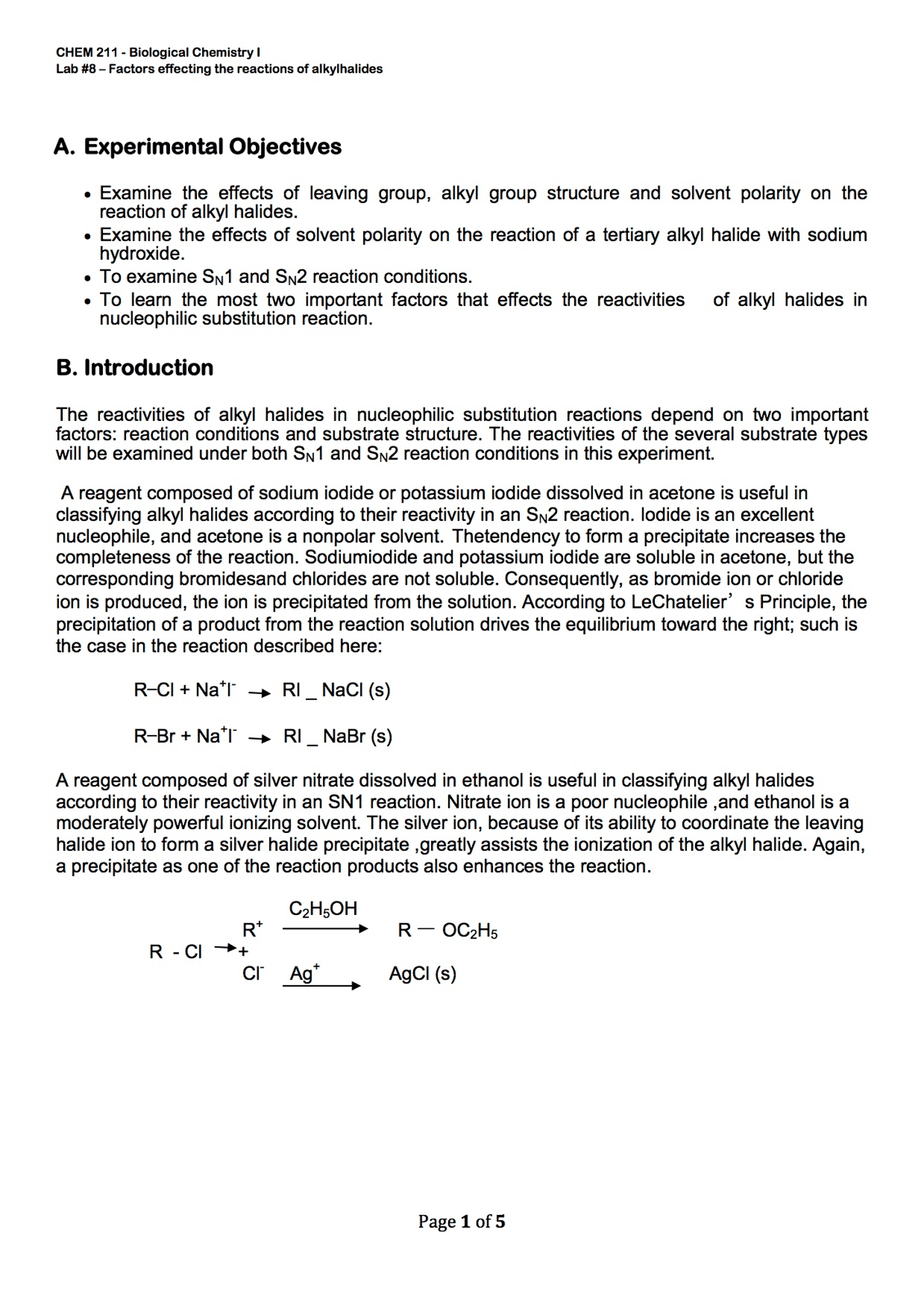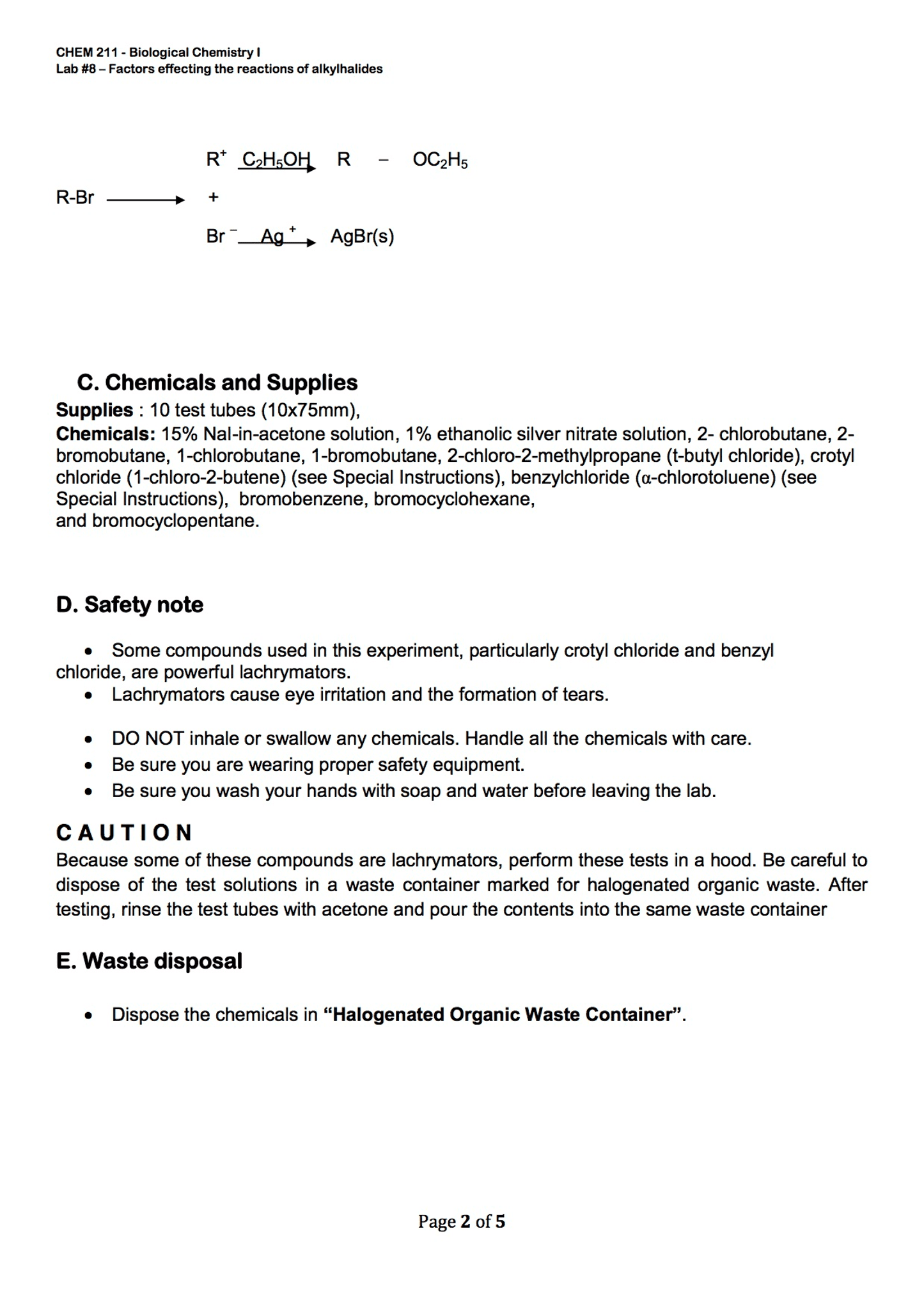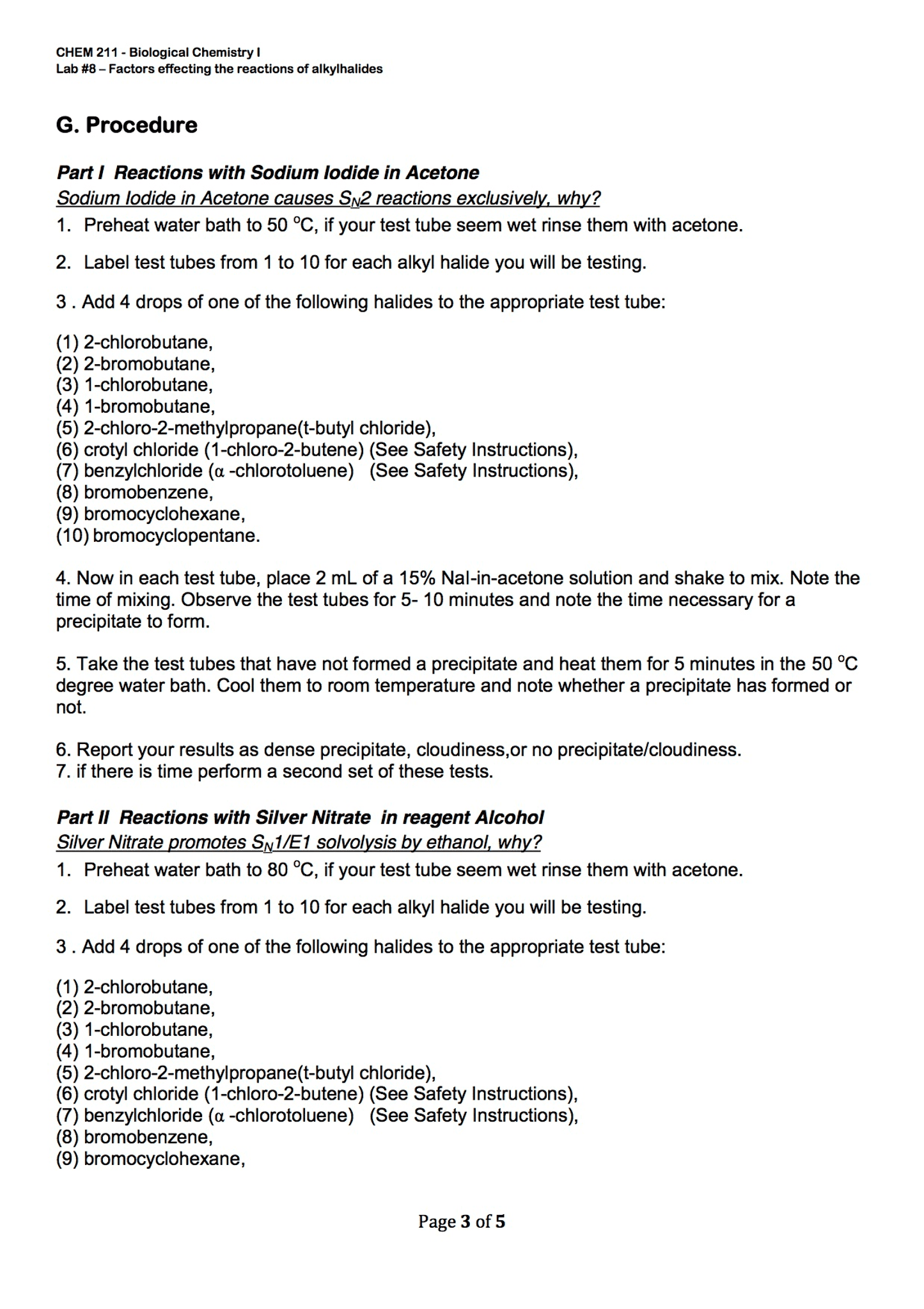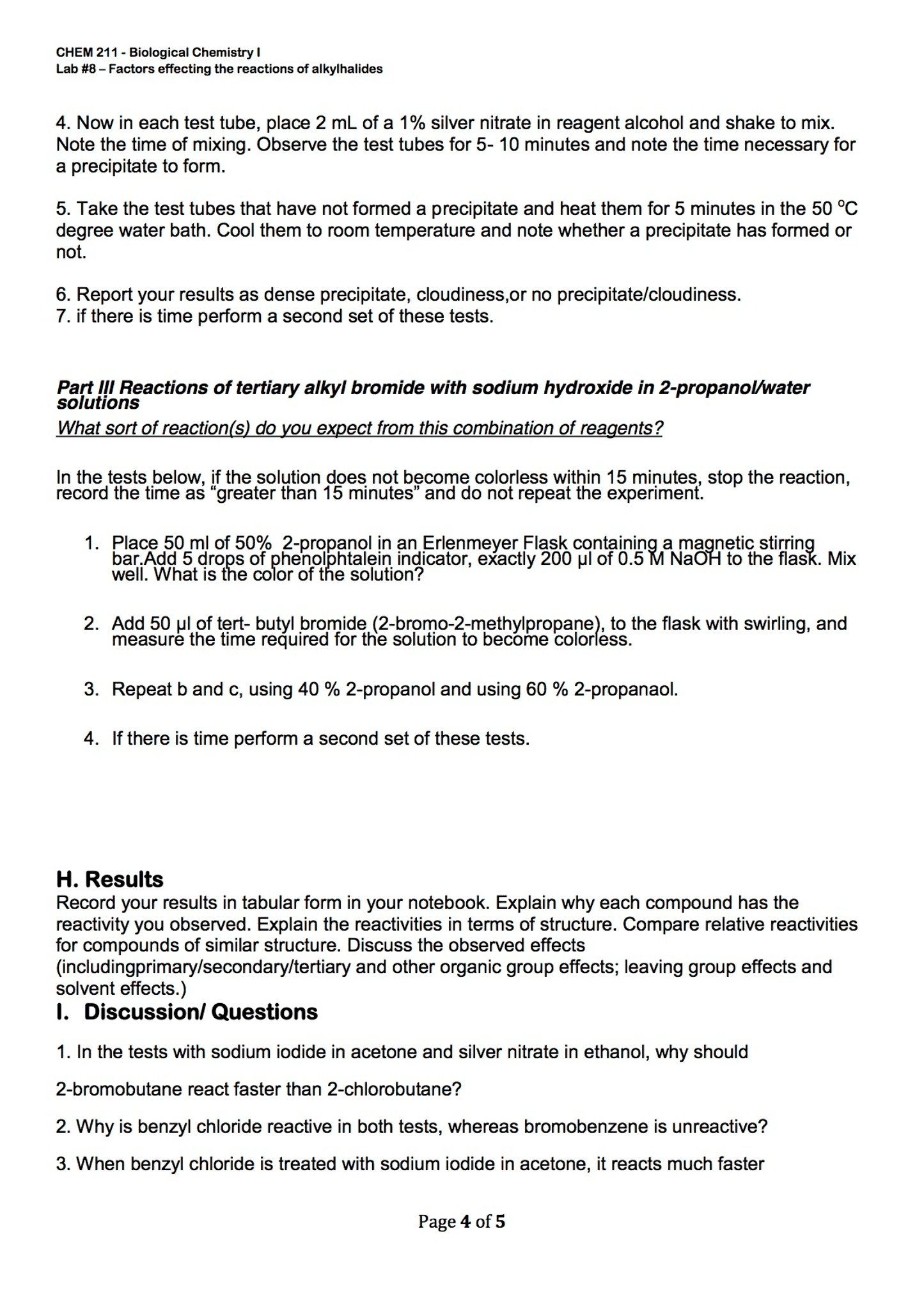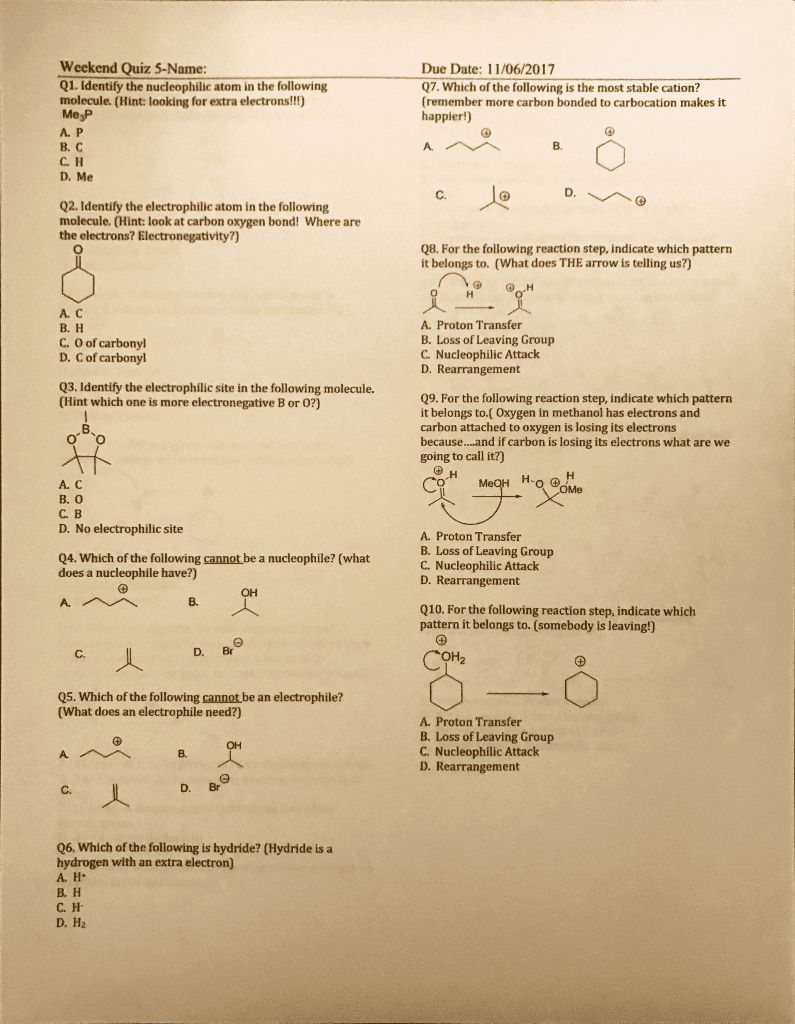CHEM 102 Lecture Notes - Lecture 8: Leaving Group, Nucleophile, Elimination Reaction
80 views1 pages
Document Summary
You have just seen molecules bearing leaving groups being attacked at two distinct electrophilic sites: the carbon to which the leaving group is attached, and the hydrogen atoms on the carbon adjacent to the leaving group. Attack at carbon leads to substitution; attack at hydrogen leads to elimination. Since strong bases attack protons, it is generally true that, the more basic the nucleophile, the more likely that elimination is going to replace substitution as the main reaction of an alkyl halide. Here is an example of this idea at work. For a nucleophile, attacking a carbon atom means squeezing past its substituents and even for unhindered primary alkyl halides there is still one alkyl group attached. This is one of the reasons that sn2 is so slow on hindered alkyl halides the nucleophile has difficulty getting to the reactive centre. One of the best bases for promoting elimination and avoiding substiutution is potassium t-butoxide.
Get access
Grade+20% off
$8 USD/m$10 USD/m
Billed $96 USD annually

Homework Help
Study Guides
Textbook Solutions
Class Notes
Textbook Notes
Booster Class
40 Verified Answers
Class+
$8 USD/m
Billed $96 USD annually

Homework Help
Study Guides
Textbook Solutions
Class Notes
Textbook Notes
Booster Class
30 Verified Answers
Related textbook solutions
Chemistry: Structure and Properties
2 Edition,
Tro
ISBN: 9780134293936
Basic Chemistry
5 Edition,
Timberlake
ISBN: 9780134138046
Principles of Chemistry Molecular Approach
4th Edition,
Tro
ISBN: 9780134112831
Chemistry: Structure and Properties
2nd Edition,
Tro
ISBN: 9780134293936
Principles of Chemistry Molecular Approach
3rd Edition, 2014
Tro
ISBN: 9780321971944
Chemistry: A Molecular Approach
3rd Edition,
Tro
ISBN: 9780321809247
Chemistry: A Molecular Approach
5th Edition,
Tro
ISBN: 9780134874371
Principles of Chemistry: A Molecular Approach
4th Edition,
Tro
ISBN: 9780134895741
Chemistry: The Central Science
14th Edition, 2017
Brown
ISBN: 9780134414232
